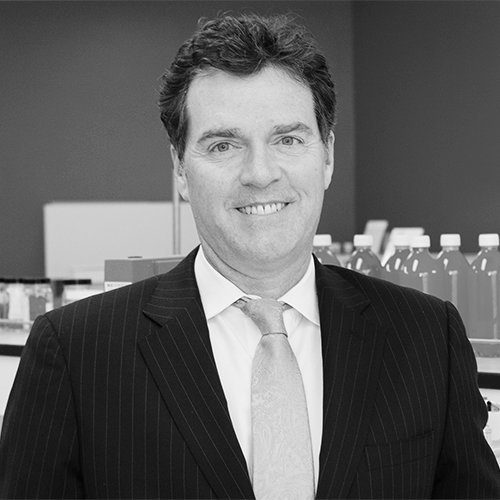As VP of business development and strategy at OSF HealthCare, a twelve-hospital, 600-physician system based in Peoria, Illinois, J.J. Guedet helps deliver care to a population of more than 700,000 patients in central Illinois and Michigan. AHL spoke with Guedet to identify why the organization is one of only thirty-one hospital systems in the US selected to be a Next Generation ACO model—and how data analytics is shaping the future of healthcare.
You say the future of healthcare is better patient outcomes at a lower cost, and the path to get there appears to be through data analytics. How does that work?
J.J. Guedet: Old-world healthcare data came from insurance claims, which was as much as six months old sometimes. You need to have daily data, as soon as it happens, to recognize things as they are happening and to make a course correction.
So what does that look like?
Guedet: Readmissions of patients are very expensive. If we see a high percentage of readmissions occurring, our first thought is, we need to fix this. We can look at the data in each individual case that allows us to break the problem down into manageable pieces, looking at variables in meaningful, correlating information. The data is now in a format where it makes sense. We are also using that information to develop predictive forecasting to identify those patients before they get readmitted and then we can proactively begin to treat the patient, with the goal of preventing that readmission.
Does the migration to electronic medical records—and perhaps your background from your former position working for Caterpillar Inc.—have something to do with this?
Guedet: It was not a huge stretch for me to move from heavy equipment manufacturing to healthcare. I was looking for a career change, and it was a coincidence of timing that OSF needed a data guy. But yes, getting electronic medical records integrated is hugely important.
Is that also a matter of changing operations, perhaps in a burdensome way?
Guedet: We were already going through the expensive process of combining many IT systems—legacies from acquisitions—into a single integrated system. It is time-consuming to build systems, implement them, and train staff. Physicians now have to do more data entry, and there is a learning curve. But because we got started early in 2007 at being an accountable care organization—before there was an Affordable Care Act—we were selected as a Pioneer ACO hospital system when the ACA was implemented.
You are now a Next Generation ACO Model because of your success in the Pioneer phase. Why is it that OSF is such a leader in successful implementation of the ACA?
Guedet: OSF applied to participate. Our executive team wanted to do this because we knew the future of healthcare was going in this direction. But also the Sisters [of the Third Order of St. Francis] want to see the ACA work nationally. They want us to figure out how to provide higher quality clinical care at a lower cost.
What are the tactics that result in better care at lower costs?
Guedet: One example is palliation or symptom management. Note, this is not necessarily hospice care. It’s another way to treat patients’ symptoms such as pain, to help them be more comfortable without having to readmit them to the hospital. This closes a major gap of care needs.
Which touches on the whole topic of home healthcare, right?
Guedet: Yes. We engage home health clinicians earlier in the process to reduce readmissions. Sometimes care at home can cost as little as $60 per day.
With pediatric patients—note, we have a great Children’s Hospital of Illinois in Peoria that is extremely in demand and at full capacity—we often had children who were hospitalized with a single need: to be connected to a humidification system for oxygen therapy. Our respiratory therapists now can set up patients to receive this treatment in the home with the AIRVO 2 equipment. The home is a much better place for children to receive treatment.
You’ve also embraced the APN [advanced practice nursing] model to reduce expenditures.
Guedet: Actually, we now call them APPs for “advanced practice provider” because it includes more types of caregivers. Physicians are overburdened and can be very expensive if they are not utilized to the top of their license, so an APP can expedite when a patient is sent home while helping to reduce readmissions.
What are some changes in Medicare and Medicaid reimbursements that affect how you deliver care?
Guedet: The old model was that a patient needed a three-day stay in a hospital before Medicare would pay for skilled nursing care. Hospitals like ours that participated in the Pioneer ACO program had that three-day rule waived. That allows patients to receive appropriate care without the expense of hospitalization.
I read that you and almost everyone in administrative positions have some patient contact every day. How does that work and what do you get out of it?
Guedet: At all levels of the ministry we do “leader rounding,” which is face-to-face contact with patients. For most of us this is from 10 to 11 a.m., Monday through Friday, when we try to see a minimum of two patients each. If we hear of a need we can electronically route a request to their caregivers. We also send kudos to whomever deserves it.
All this use of data doesn’t seem to get in the way of the “high touch” needs of healthcare.
Guedet: It allows us to better attend to the emotional, social, and spiritual needs of our patients. AHL

